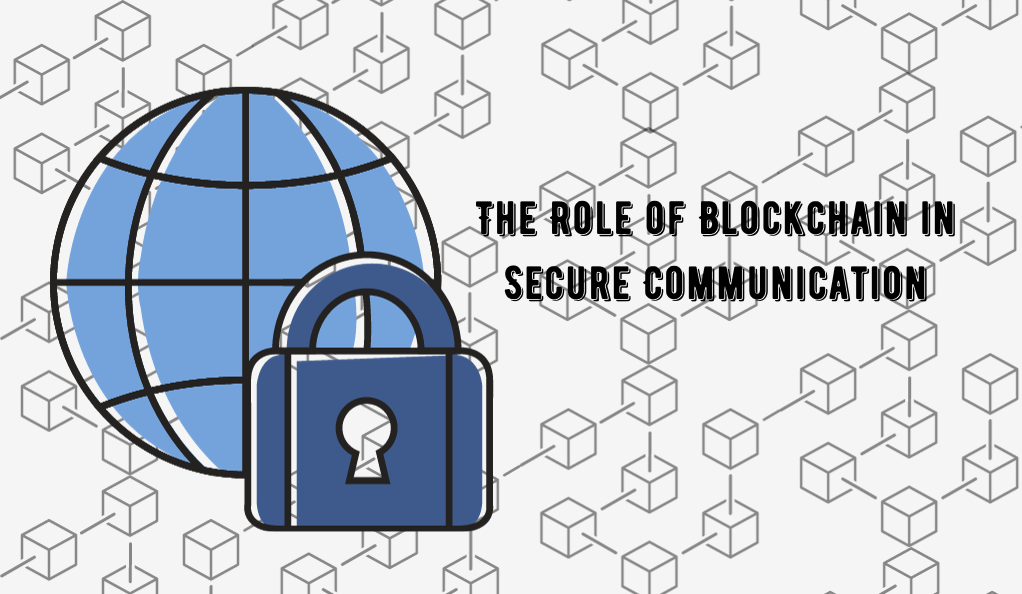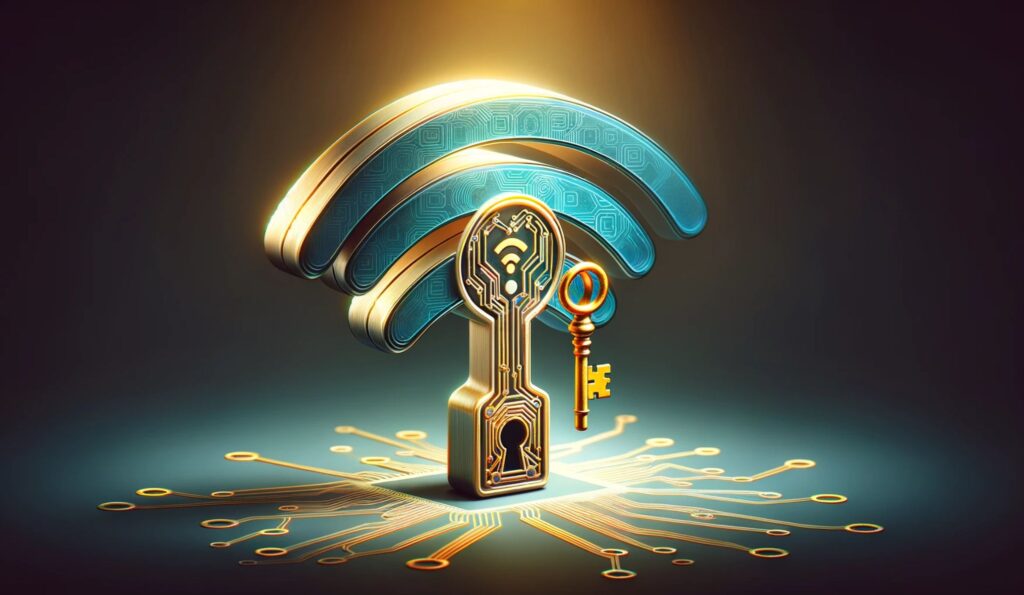In today’s rapidly evolving digital landscape, the need for secure communication has never been more paramount. From financial transactions to confidential business communications, the integrity and security of the data being exchanged are of utmost importance. Enter blockchain, a revolutionary technology that promises to redefine the way we think about data security and communication.
What is Blockchain?
At its core, blockchain is a distributed ledger technology that records transactions across multiple computers in a way that ensures the data can only be updated by consensus between participants in the system, and once entered, cannot be altered. Each record in the blockchain is called a block, and multiple blocks are linked together in a chronological manner to form a chain. This structure ensures that every piece of data is traceable to its origin, making unauthorized alterations virtually impossible.
The Significance of Secure Communication
The digital age has brought about unprecedented levels of connectivity and convenience. However, it has also introduced a myriad of security challenges. Data breaches, identity theft, and cyberattacks have become commonplace, costing businesses billions and compromising the personal information of countless individuals. In this environment, the ability to communicate securely, without the fear of eavesdropping or tampering, is not just a luxury but a necessity.
Blockchain: A Game-Changer for Secure Communication
Blockchain’s decentralized nature means that, unlike traditional centralized databases, there is no single point of failure. This decentralization, combined with cryptographic security measures, ensures that data stored on the blockchain remains private and secure. Furthermore, the transparent nature of the technology means that all transactions can be verified by any participant in the network, adding an additional layer of trust and accountability.
Understanding Blockchain
Blockchain, often hailed as the ‘next internet,’ is more than just the technology behind cryptocurrencies. It’s a groundbreaking system designed for secure, transparent, and tamper-proof record-keeping. But how does it achieve these feats?
Basic Principles of Blockchain
Every blockchain starts with a genesis block, the first entry in the ledger. Subsequent blocks contain a set of transactions, a timestamp, and a cryptographic hash of the previous block. This chaining of blocks ensures that to alter any single block, one would need to change every subsequent block, which is computationally infeasible given the consensus mechanisms in place.
Ensuring Data Integrity with Blockchain
One of the standout features of blockchain is its ability to maintain data integrity. Here’s how it achieves this:
- Decentralization: Unlike traditional databases that have a central authority, blockchains operate on a network of computers (nodes). Each node has a copy of the entire blockchain, and all nodes must reach a consensus for a new block to be added. This means no single entity has control, reducing risks of fraud or malicious attacks.
- Cryptography: Transactions on the blockchain are secured using cryptographic algorithms. This ensures that data, once recorded, cannot be altered without the consensus of the majority of the network.
- Transparency with Privacy: While all transactions are visible to participants, the identity of the participants is encrypted. This ensures transparency in transactions while maintaining the privacy of the parties involved.
Decentralization: The Core of Blockchain
The decentralized nature of blockchain is what sets it apart from traditional systems. But why is decentralization so crucial for secure communication?

Enhancing Security through Decentralization
Centralized systems, like traditional databases or servers, have a single point of control. This makes them vulnerable to attacks, fraud, or even system failures. In contrast, in a decentralized blockchain system:
- There’s no central point of failure. Even if a few nodes in the network are compromised, the blockchain remains intact.
- It’s resistant to censorship. No single entity can control or alter the data on the blockchain without consensus.
- It reduces the need for intermediaries, often reducing costs and increasing efficiency.
The Peer-to-Peer Advantage
Blockchain operates on a peer-to-peer (P2P) network model. This means that all participants in the network interact directly with each other without the need for intermediaries. This P2P model ensures faster transactions, reduced costs, and enhanced security. Every participant, or node, in the network has equal authority and the complete record of transactions, ensuring transparency and trustworthiness.
Blockchain’s Immutability
One of the most lauded features of blockchain technology is its immutability. But what does this mean, and why is it so crucial for secure communication?
The Irreversible Nature of Blockchain Transactions
Once a transaction is recorded on the blockchain and confirmed by the network’s consensus mechanism, it becomes a permanent part of the ledger. This means that the transaction cannot be altered, deleted, or reversed. This permanence is achieved through the cryptographic linking of blocks and the decentralized validation process.
How Immutability Ensures Secure Communication
- Trustworthiness: Knowing that once data is recorded, it cannot be tampered with, gives users confidence in the system. This trust is especially vital in applications like financial transactions, where the integrity of the record is paramount.
- Transparency: All participants can verify transactions on the blockchain, ensuring that no malicious alterations have been made.
- Accountability: In the rare event of discrepancies or disputes, the immutable record provides a clear and unchangeable history of all transactions, aiding in resolution.
Public vs. Private Blockchains
Blockchain technology can be implemented in various forms, with public and private blockchains being the most common. Understanding the differences between these types is essential when considering their implications for secure communication.
Public Blockchains
- Open Access: Anyone can join and participate in the network.
- Decentralized: No single entity has control, ensuring transparency and security.
- Examples: Bitcoin, Ethereum.
Private Blockchains
- Restricted Access: Only authorized participants can join the network.
- Centralized Control: Often controlled by a single organization, but with the benefits of blockchain’s security features.
- Examples: Hyperledger, Corda.
Implications for Secure Communication
- Public Blockchains: Offer greater transparency and are more resistant to censorship. However, they might be slower due to the larger number of participants and the need for extensive consensus mechanisms.
- Private Blockchains: Can be tailored to specific organizational needs and are generally faster. However, they sacrifice some degree of decentralization and transparency.
Blockchain’s Resistance to Tampering

The decentralized and cryptographic nature of blockchain makes it inherently resistant to tampering.
- Consensus Mechanisms: Before a transaction is added to the blockchain, it must be verified by a majority of nodes in the network. This consensus mechanism ensures that malicious actors cannot easily add fraudulent transactions.
- Double-Spending Problem: One of the significant challenges in digital currencies is the potential for a user to spend the same amount twice. Blockchain addresses this issue through its consensus mechanisms, ensuring that each transaction is unique and valid.
Future of Blockchain in Communication
The potential of blockchain extends far beyond its current applications in cryptocurrencies. Its inherent features make it a promising tool for various sectors, especially in the realm of communication.
Potential Applications Beyond Cryptocurrencies
- Secure Messaging: Blockchain can be used to develop messaging platforms where messages are encrypted, tamper-proof, and can be verified by all participants, ensuring privacy and security.
- Identity Verification: With rising concerns about identity theft and fraud, blockchain can provide a decentralized identity verification system where personal data is stored securely and can only be accessed with the individual’s consent.
- Supply Chain Communication: Blockchain can track products from their origin to the consumer, ensuring transparency and authenticity in the supply chain. Every stakeholder, from the manufacturer to the end consumer, can verify the product’s journey.
- Smart Contracts: These are self-executing contracts with the terms directly written into code. They automatically enforce and verify the terms of a contract, reducing the need for intermediaries and ensuring secure and transparent transactions.
Challenges and Opportunities Ahead
While blockchain holds immense promise, it’s not without its challenges:
- Scalability: As the number of transactions increases, the size of the blockchain grows, leading to concerns about its scalability and the speed of transactions.
- Interoperability: With multiple blockchains in existence, there’s a need for these systems to interact seamlessly.
- Regulatory Concerns: The decentralized nature of blockchain poses challenges for regulatory frameworks, which are typically designed for centralized systems.
Conclusion
Blockchain’s role in secure communication is undeniable. Its decentralized, transparent, and immutable nature makes it a formidable tool in the face of modern communication challenges. From ensuring data integrity to revolutionizing how contracts are executed, blockchain is set to redefine the paradigms of secure communication.
While challenges exist, the continuous evolution of the technology and the solutions being developed to address its limitations are testament to its potential. As we continue to explore and harness the capabilities of blockchain, it’s clear that its impact on communication and numerous other sectors will be profound and lasting.








